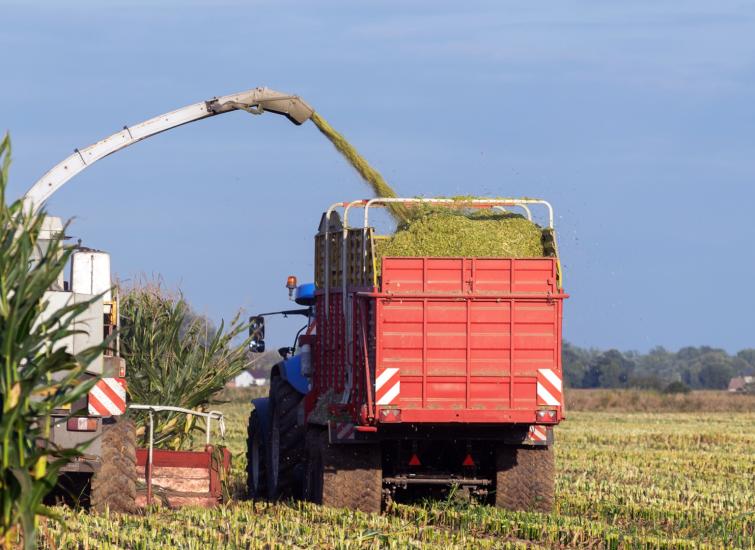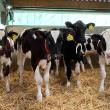After Advanced Nutrition's advice and using DC X-Zel for our transition cows we have found they are fitter and healthier. They don’t lose much condition after they calve, right through to lactation. They just calve down better.
Speed is of the Essence when Ensiling Maize
Gordon Marley, Global Silage Support Lead at Alltech tells us why...

Maize silage quality is 80% in the hands of the farm with the farms harvesting, ensiling, compacting and sealing management being critical to the success of the final silage, coupled with good feed out management.
So what about the other 20% of the silage quality? With all forages, including maize, the faster the ensiled forage is turned anaerobic the faster the pH can fall and the more dry matter, digestibility and nutrients that can be protected. In short – the quicker we go from field to fully fermented the better the final silage and the more milk that can be produced. Speed is of the essence.
The farm should target an ensiling dry matter of 34 – 35% with a cut height in the region of 30cm to minimise soil contamination (the lower part of the stem is mainly indigestible fibre with little feed value that will slow the fermentation if ensiled) with a chop length appropriate to the diet (9 – 13mm for standard maize for animal production but as short as possible for biogas). Maize should be ensiled in even, thin layers to target a density of approximately 240Kg DM m-3 when over 30% DM, and if taking more than 1 day to fill the clamp ideally should be covered overnight but irrespective of this fresh maize should be added the following day before compaction re-starts to negate squeezing out the carbon dioxide that has formed overnight. Enormous improvements have been made in silage plastic quality over recent years with the introduction of vacuum plastics and oxygen barrier plastics both of which reduce the losses and enhance the stability of the produced maize silage and should be used whenever possible. It doesn’t look likely this year but if the maize becomes temperature / drought stressed then nitrate concentrates at the base of the stem and the likelihood of silo gas being produced in the first few days of ensiling increases (bright orange gas smelling of bleach and if observed all staff and animals must be kept away from the maize as it is highly toxic).
Effective kernel processing is crucial during harvest in order to maximise starch digestibility during feed out. Starch digestibility increases ten percent during the first 2 months of storage due to naturally occurring plant enzymes but only if the kernels are adequately processed, leading to increased feed conversion efficiency and better milk potential within the silage.
Naturally occurring bacteria drive an inefficient fermentation that results in significant losses of nutrients and dry matter – significant loss in the milk potential of the silage, which is where homolactic additives like Egalis Rapid and the Egalis Stability can enormously help the efficiency of maize silage production by significantly increasing the ratio of desirable efficient homolactic bacteria to inefficient bacteria.
Strong reference is made to the term homolactic as for many years inoculant companies have insisted that farms need to use heterolactic products containing bacteria such as L buchneri, L hilgardii or L brevis that produce acetic acid to reduce yeast activity (heating) but as ensiling and feed out knowledge has improved and farms are using defacers, block cutters and oxygen barrier plastic the reality is that silage has 3 – 4 days to cross the face and the negative impacts of using these products can be avoided (increased losses, reduced digestibility and reduced intake due to lower palatability).
Egalis Rapid has been developed specifically for all types of maize silages to drive a homolactic fermentation quickly and efficiently, producing highly palatable silage with excellent nutrient maintenance. The bacteria in Egalis Rapid have been selected specifically for their ability to maintain nutrients and digestibility in maize and are unique to Egalis.
Many farms need to open their silage relatively quickly due to shortages of feed stock. Opening the silage after 1-2 weeks means that the microbiology and the fermentation profile has not stabilised and that the silage can be prone to heating as yeast are still present because the ensiling bacterial relay has not been completed. Egalis Stability overcomes this issue through adding an inhibitory level of potassium sorbate in combination with homolactic bacteria meaning that yeast and mould are immediately started to be inhibited, giving the farm ‘early stability and real, long term stability’ without reducing the dry matter, nutrient or digestibility recovery associated with other products.
The farm invests in the genetics of its herd to have optimal characteristics. Doesn’t the herd deserve the best silage?
If you have any questions about Egalis Rapid, please call the Advanced Nutrition office on 015242 63139 and ask to speak to your local nutritionist.
〈 BACK




